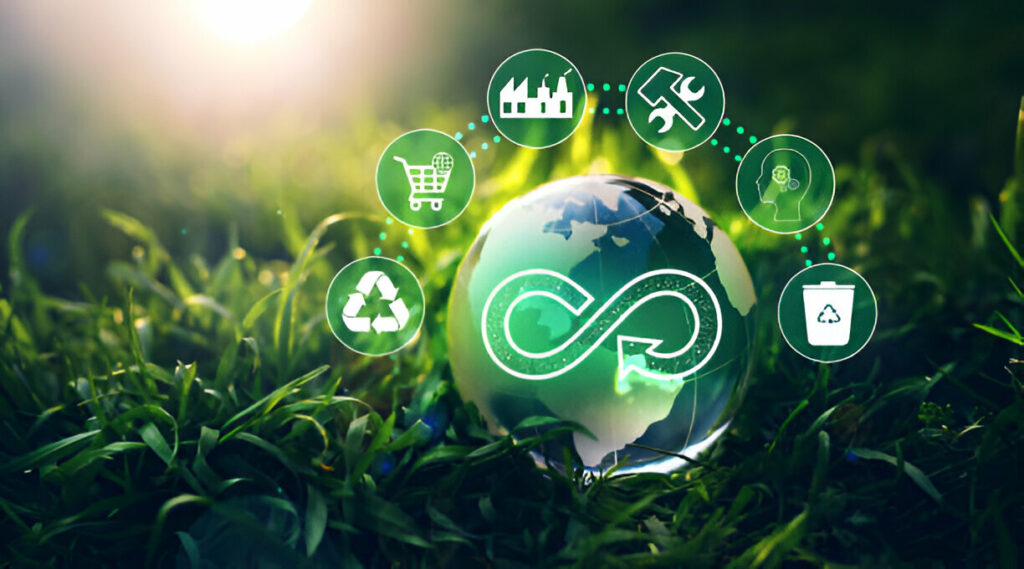Manufacturing has long been associated with large-scale resource consumption and waste generation. However, with rising environmental concerns and increasing pressure for sustainable development, businesses are turning toward a more efficient and responsible model — the Circular Economy.
Unlike the traditional linear approach of “take, make, dispose,” the Circular Economy emphasizes reuse, recycling, and regeneration. In the context of manufacturing, this model presents an opportunity to optimize resource use, reduce environmental impact, and build long-term economic resilience.
In this blog post, we’ll explore how the Circular Economy is revolutionizing manufacturing, the key principles behind it, and real-world strategies for implementation.
What Is the Circular Economy?
The Circular Economy is an economic system aimed at eliminating waste and keeping materials in use for as long as possible. It contrasts sharply with the linear economy, where products are made, used, and discarded.
Key Principles of the Circular Economy:
- Design Out Waste and Pollution
Products are designed to minimize environmental impact from the outset. - Keep Products and Materials in Use
Through repair, reuse, remanufacturing, and recycling. - Regenerate Natural Systems
Return valuable nutrients to the soil and other ecosystems.
In manufacturing, this means designing products for durability, disassembly, and recyclability while finding ways to minimize raw material use and energy consumption.
Why Manufacturing Needs a Circular Economy
Manufacturing is resource-intensive, often responsible for high levels of carbon emissions, water usage, and industrial waste. A Circular Economy model addresses these issues by:
- Reducing dependency on virgin materials
- Lowering greenhouse gas emissions
- Increasing operational efficiency
- Extending product life cycles
- Creating value from waste streams
These practices not only reduce the environmental footprint but also create new economic opportunities in repair, remanufacturing, and recycling industries.
Benefits of a Circular Economy in Manufacturing
1. Resource Efficiency
Manufacturers can use fewer raw materials by recycling inputs and repurposing waste, which lowers production costs.
2. Waste Reduction
Products designed for reuse or disassembly significantly reduce landfill waste and pollution.
3. Cost Savings
Reusing materials and optimizing production processes reduces both material and disposal costs.
4. Innovation and Competitiveness
Circular practices encourage innovation in product design, business models, and supply chains.
5. Regulatory Compliance
Many countries are introducing environmental regulations that favor circular approaches, making early adoption a strategic advantage.
Strategies to Implement Circular Economy in Manufacturing
Manufacturers can embrace circularity at various stages of the product life cycle:
1. Eco-Design
Design products to be modular, repairable, and recyclable.
2. Use of Recycled Materials
Integrate post-consumer or industrial recycled content into production.
3. Product-as-a-Service (PaaS)
Shift from selling products to offering services, like leasing machinery or tools, with a take-back model.
4. Reverse Logistics
Establish systems to return used products for refurbishment or material recovery.
5. Collaborative Supply Chains
Partner with suppliers and recyclers to ensure continuous material loops.
These strategies not only improve sustainability but also open up new revenue streams and customer engagement opportunities.
Real-World Examples of Circular Economy in Action
Philips
Philips has adopted a circular business model by offering medical equipment through leasing instead of sales. This allows for easier recovery, refurbishment, and reuse of products.
Renault
Renault’s Choisy-le-Roi plant remanufactures automotive parts, reducing material use by up to 80% and significantly cutting energy consumption.
Interface
This carpet manufacturer uses recycled materials in its products and has developed take-back schemes to recover and recycle used tiles.
Challenges in Adopting a Circular Economy Model
While the benefits are clear, the shift to a Circular Economy comes with its challenges:
- Initial investment costs
- Supply chain complexity
- Need for redesign and re-engineering
- Cultural and organizational resistance
- Lack of awareness or technical knowledge
However, with government support, innovation incentives, and increased environmental consciousness, these hurdles can be overcome.
Supporting Resources
For more insights on how sustainable practices can benefit businesses, explore our guide on Solar Energy and Climate Change — a great example of how technology sectors are embracing sustainability.
Additionally, the Ellen MacArthur Foundation offers comprehensive reports and case studies on implementing the Circular Economy across various industries.
Conclusion
The Circular Economy is no longer a futuristic concept — it is a viable, necessary approach to sustainable manufacturing. By designing smarter products, optimizing resource use, and embracing new business models, manufacturers can drive long-term value while preserving the environment.
Transitioning to a Circular Economy requires a shift in mindset, but the payoff is substantial: lower costs, reduced waste, innovation-driven growth, and a stronger brand reputation. As industries and consumers alike move toward more conscious practices, the time to adopt circular strategies is now.




